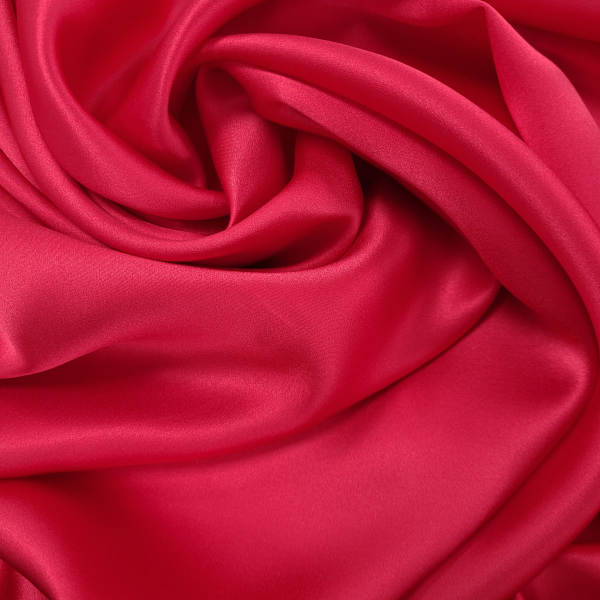
Satin is one of the most common terms when referring to silk fabric. The name is derived from the satin weave which produces a smooth and lustrous surface, created by weaving a minimum of four weft (vertical) with a single warp (horizontal) yarn, which results in fewer interlacings. Satin can be produced from both natural or synthetic fibres, but a silk yarn will deliver a more exclusive and luxurious handle.
Satin is one of three main weaves – the others being plain and twill - and there are different types of satins. Among the most popular are: crepe backed, with a dull reverse side, charmeuse, a lightweight fabric, and duchess, a heavy stiff satin.
Many fabrics marketed as silky satin, satin silk and derivatives of these are not, in fact, silk but commonly 100% polyester, nylon or rayon, so do check carefully before purchasing.
It is believed that the silk satin weave was created in China in the city of Zaitun – hence the subsequent derivation of the name satin. As this lustrous fabric travelled along the silk road its reputation and popularity grew and its beauty and elegance made it the chosen fabric among royalty and wealthy merchants. Today’s production of silk satin on modern power looms has made this exclusive fabric more accessible and affordable. It is widely used for women’s couture and bridal wear, lingerie and bedding due to its unique properties of a soft handle and draping qualities and it dyes beautifully.
Pongees offers more than 20 satin ranges. When it comes to sewing and make up, satin is slippier than other fabrics, so good seam construction is essential.




